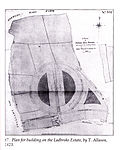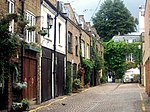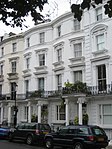St John's, Notting Hill
1845 establishments in EnglandBuildings and structures in Notting HillChurch of England church buildings in the Royal Borough of Kensington and ChelseaDiocese of LondonGrade II listed churches in London ... and 1 more
History of the Royal Borough of Kensington and Chelsea

St John's Notting Hill is a Victorian Anglican church built in 1845 in Lansdowne Crescent, Notting Hill, London, designed by the architects John Hargrave Stevens (1805/6–1857) and George Alexander (1810–1885), and built in the Victorian Gothic style. Dedicated to St John the Evangelist, the church was originally built as the centrepiece of the Ladbroke Estate, a mid nineteenth century housing development designed to attract upper- and upper middle-class residents to what was then a largely rural neighbourhood in the western suburbs of London.
Excerpt from the Wikipedia article St John's, Notting Hill (License: CC BY-SA 3.0, Authors, Images).St John's, Notting Hill
Lansdowne Crescent, London Notting Hill (Royal Borough of Kensington and Chelsea)
Geographical coordinates (GPS) Address Website Nearby Places Show on map
Geographical coordinates (GPS)
| Latitude | Longitude |
|---|---|
| N 51.510833333333 ° | E -0.20583333333333 ° |
Address
Acorn Nursery School
Lansdowne Crescent 2
W11 2PA London, Notting Hill (Royal Borough of Kensington and Chelsea)
England, United Kingdom
Open on Google Maps











